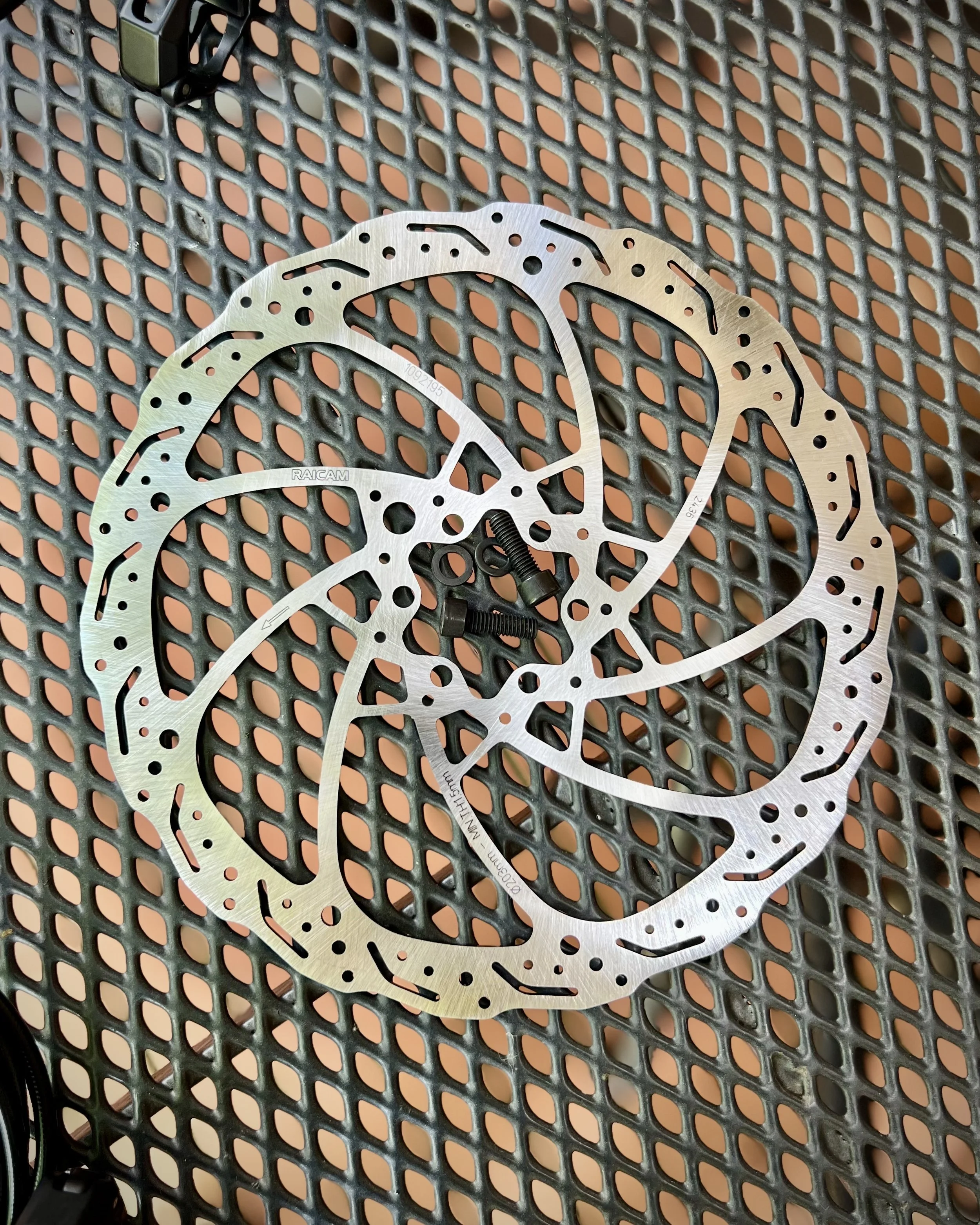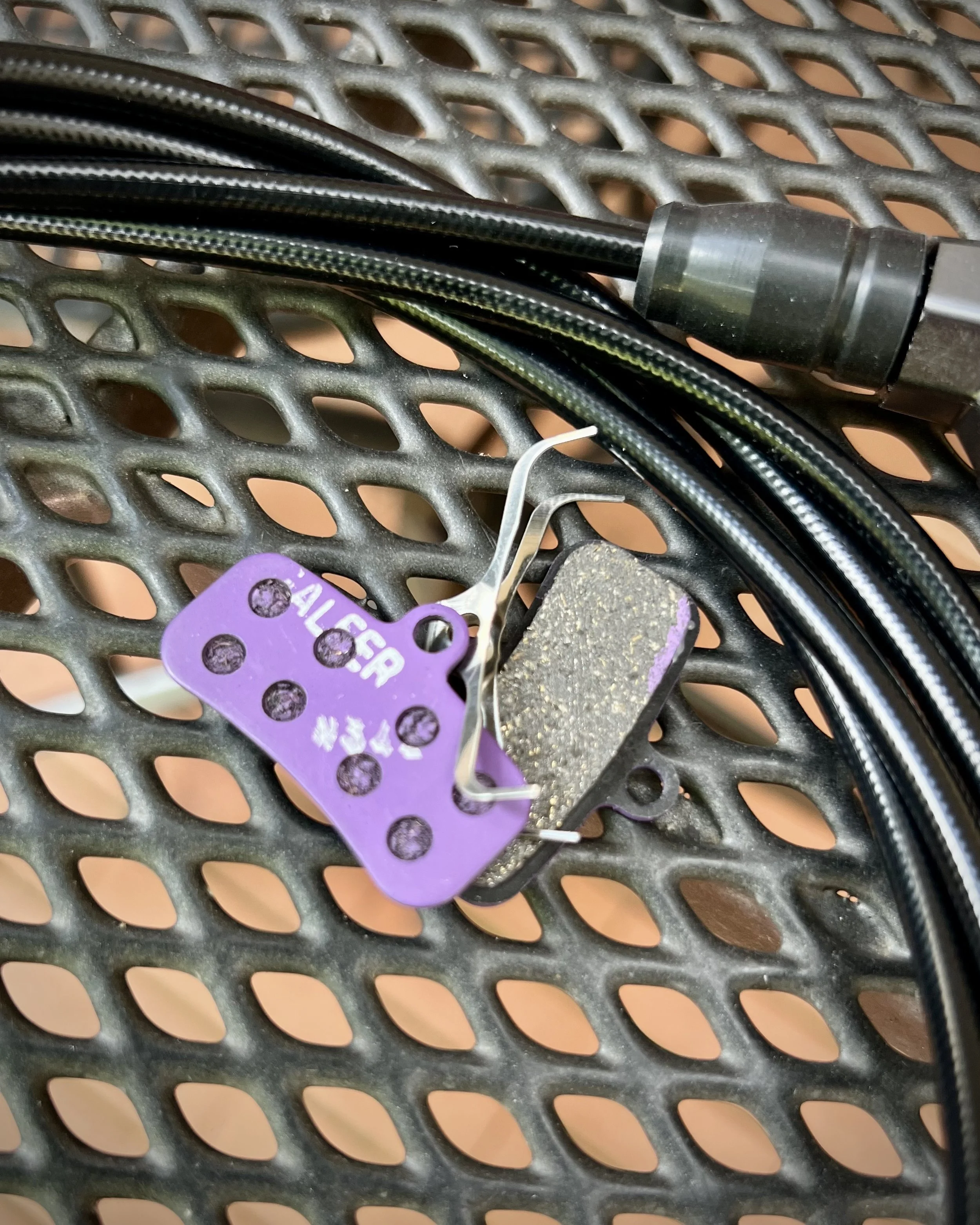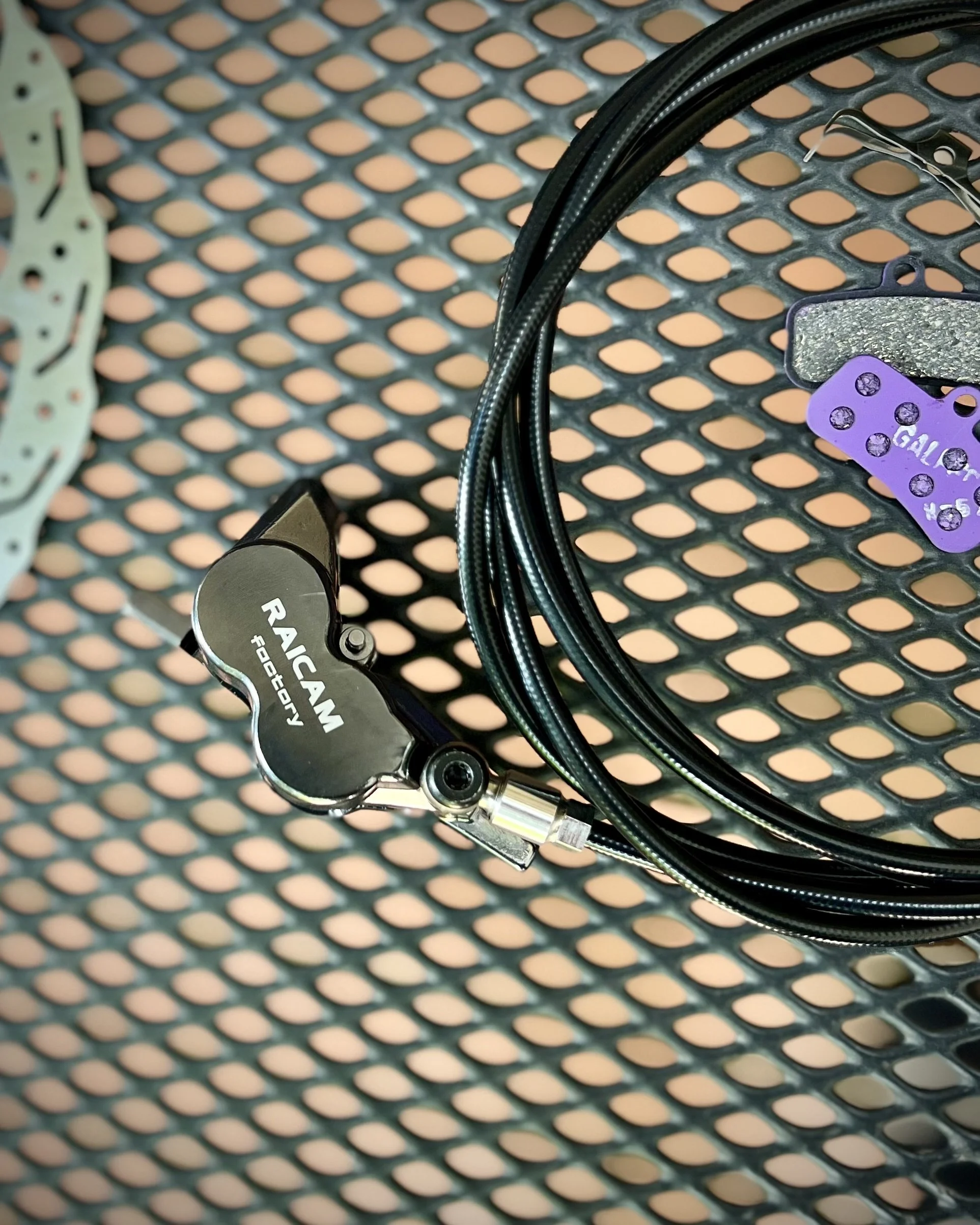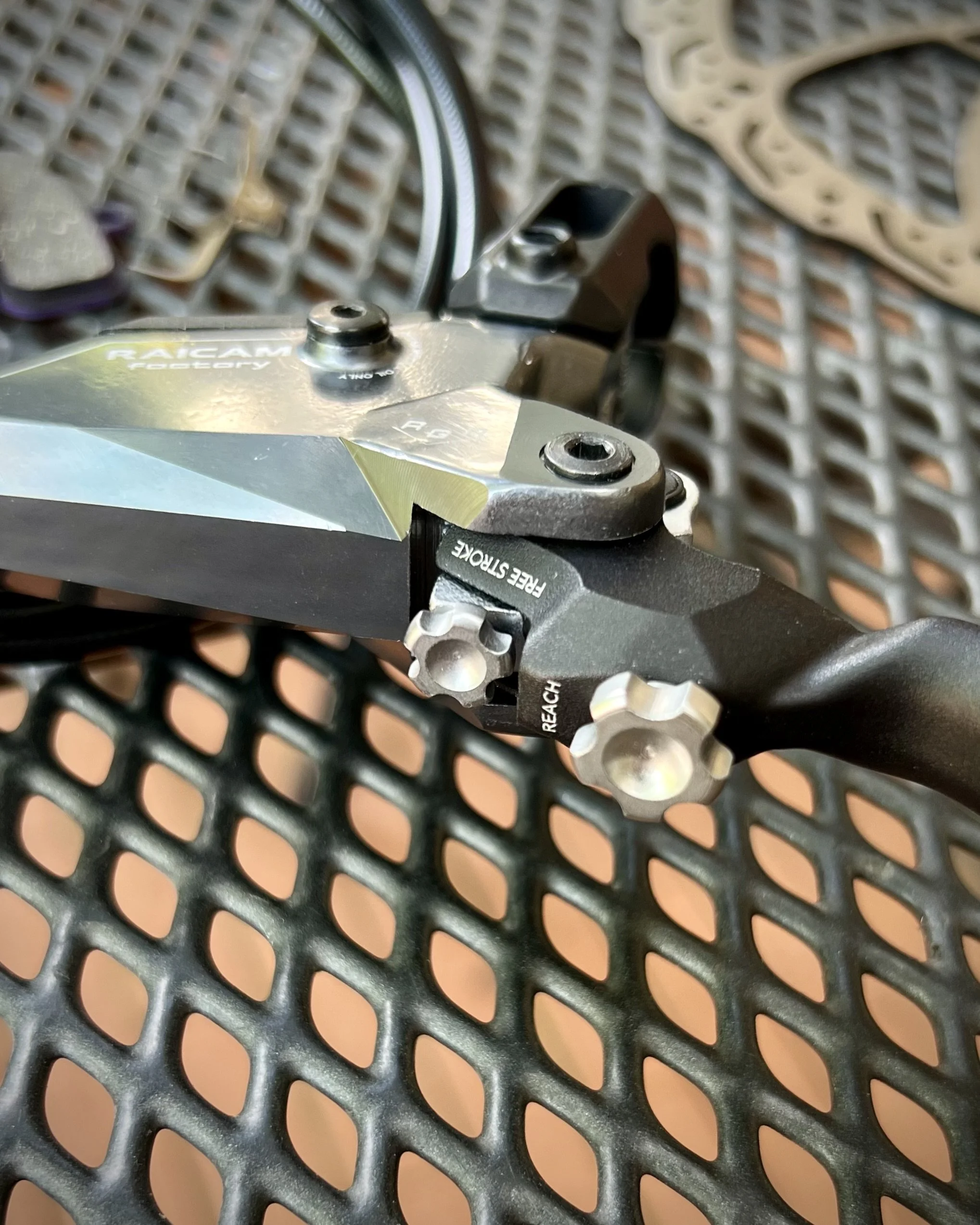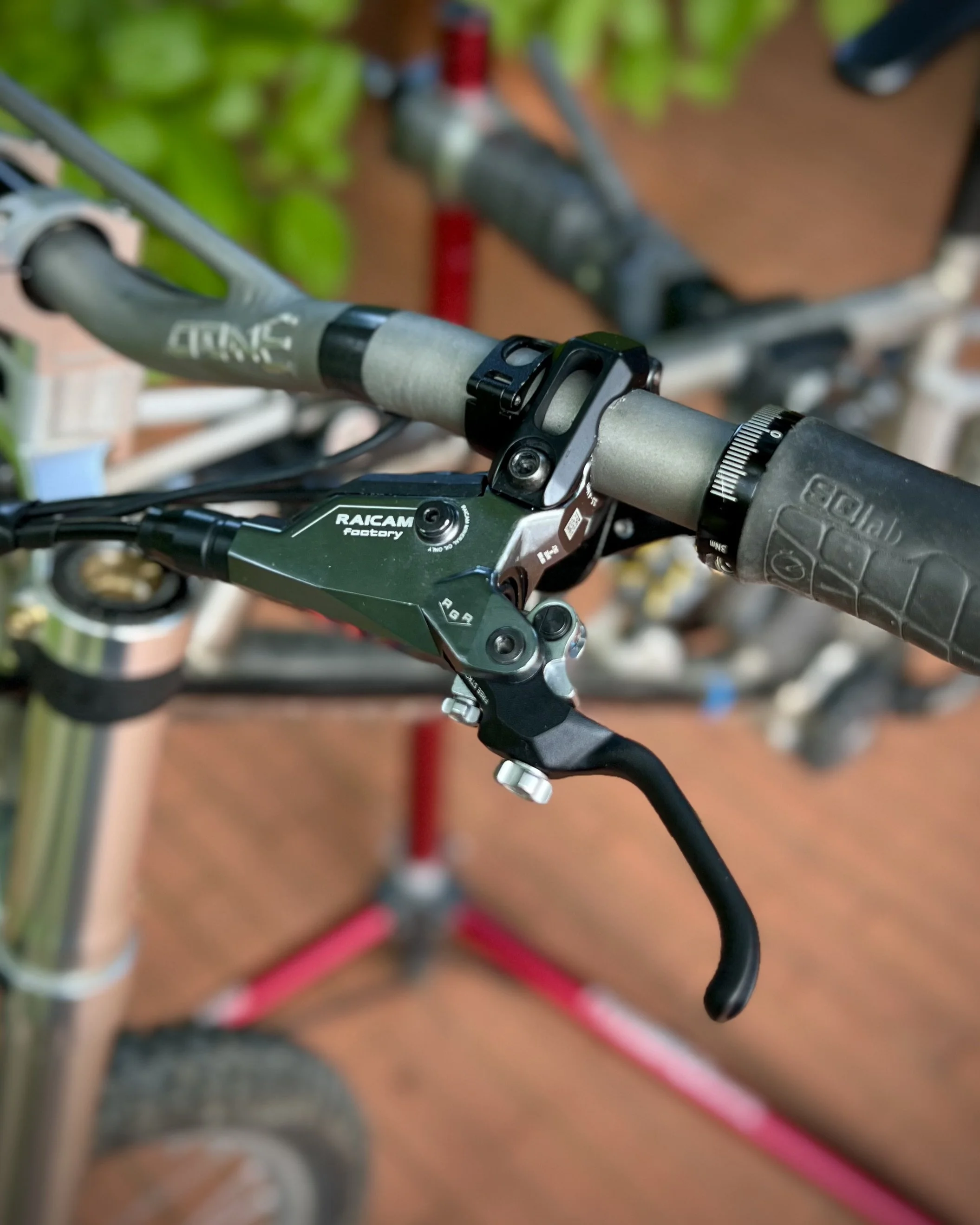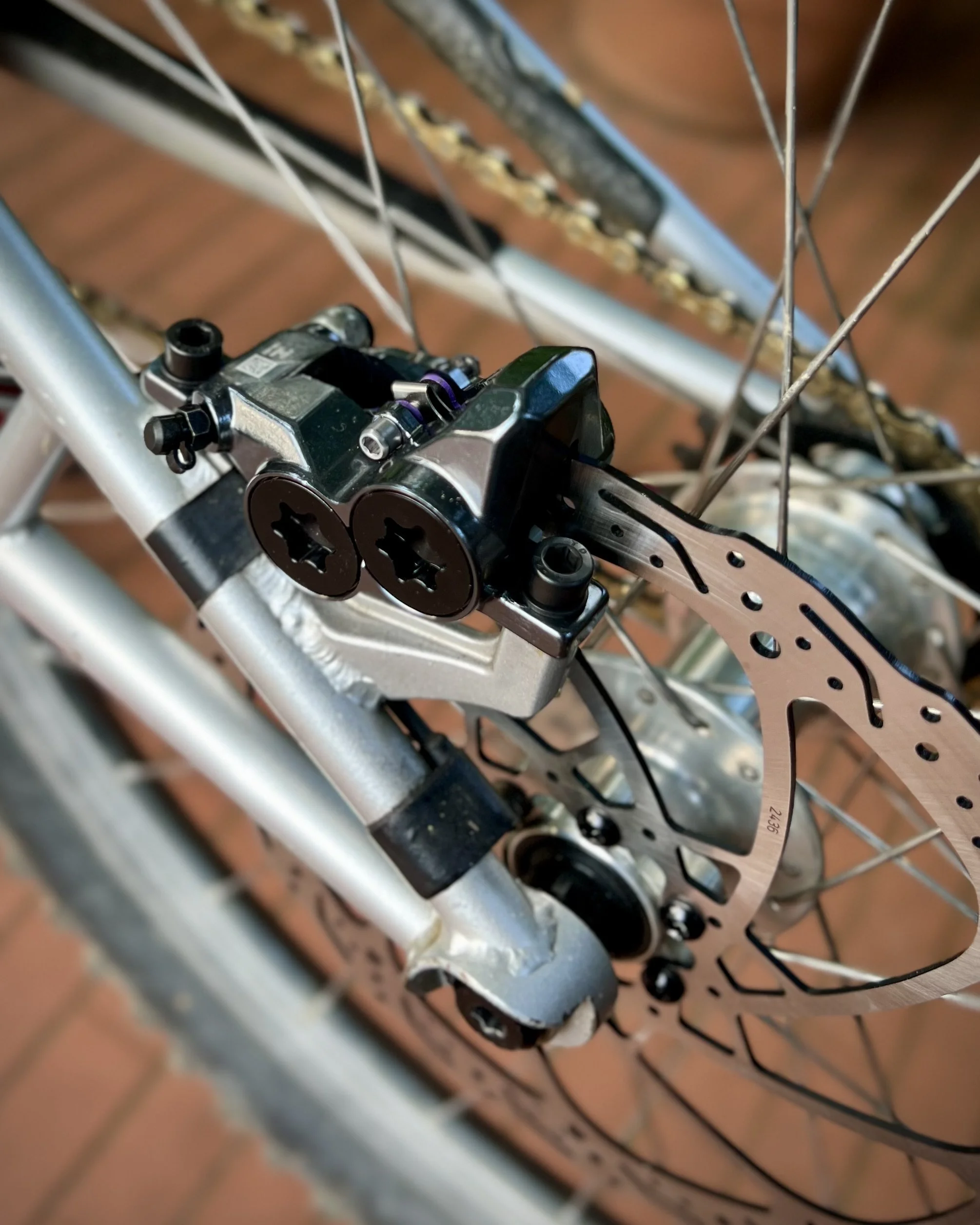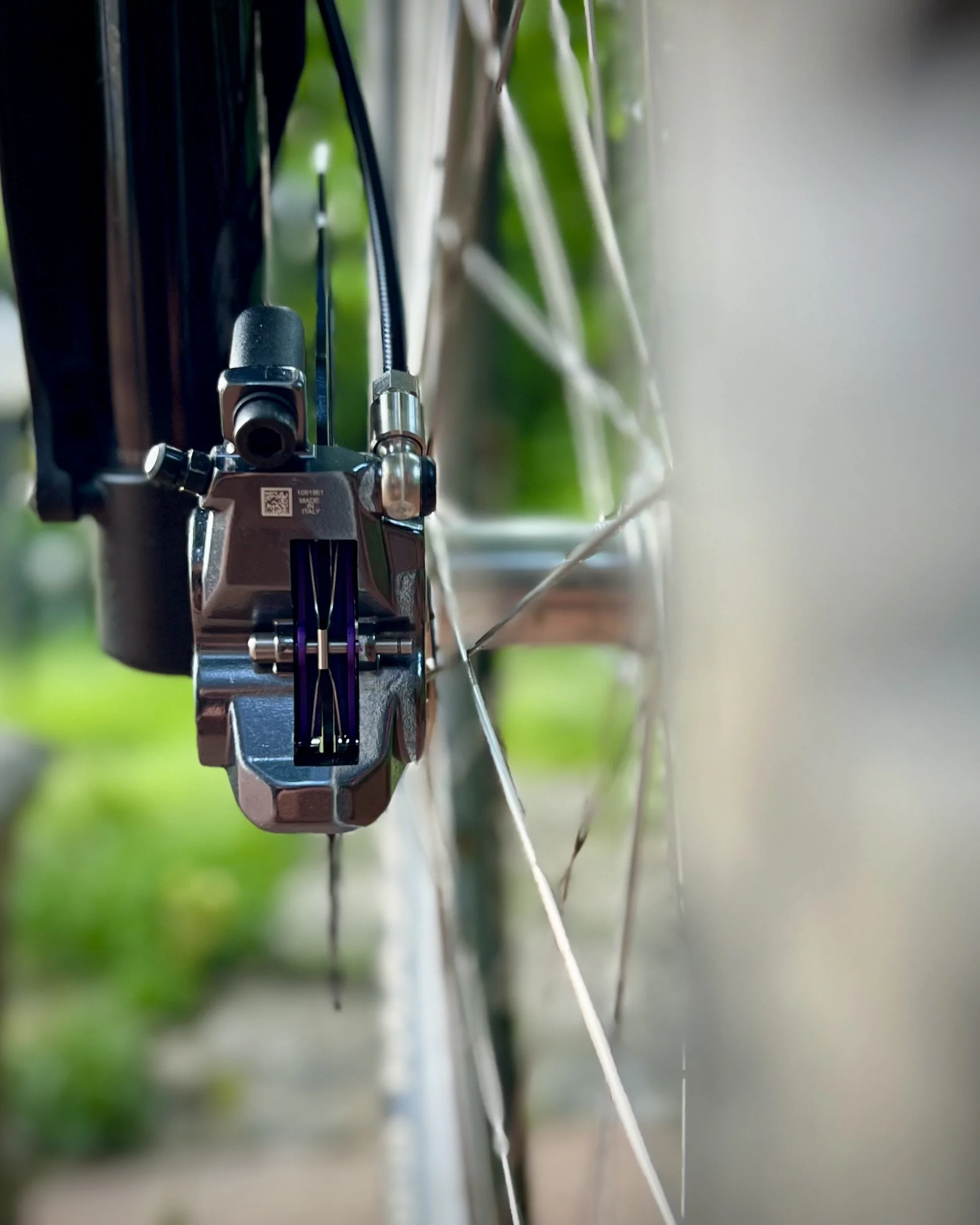Raicam RGR Factory Brakes - Review
A completely new entry to the MTB brake market.
Introduction
Raicam are a newcomer to the MTB scene. This Italian, but global brand, appears to be a big player in the aerospace and automotive world. Their HQ is in Mondovi in Italy, close to the riding paradises of the Ligurian coast and the Maritime Alps, so I guess there’s some good inspiration to start making MTB brakes.
I picked these up from Ebikestore Brescia: they sold me a package for €800 for the pair of brakes including Galfer Purple pads (Raicam offer their own ceramic pads but they weren’t in stock or included with the brakes), some spare olives and banjos, plus Raicam’s 203mm x 2mm thick rotors and their mineral oil.
Extreme Exploration time!
Ready to go.
There was a more expensive ‘Pro’ version for around €100 more, but the only differences I could see were the braided kevlar hoses and the red colour way—but I wanted to keep my bike stealthy with the titanium grey finish. The Raicam website also shows a ‘Performance’ model which looks to be the same but loses the free stroke adjuster.
Construction
203mm x 2.0mm
Purple Galfs
The brakes appear to use a forged calliper and lever body which are then machined in some places and anodised. The lever blades are shot peened and black anodised. This middle tier of the Raicam range come with standard plastic hoses. Overall they have a nice finish but a little blasé compared to some of the fully machined brakes out there.
There is separate reach and bite point adjustment for the lever and the knobs look similar to Hope’s. The lever itself is quite short and a similar shape and feel to Shimano brakes without the Servowave actuator.
There are 4x 17mm pistons according to my measurements, which are bigger than most brakes out there, but the same as the Lewis LHT. For comparison, Hope Tech4 V4 has 16/18mm and Trickstuff Maxima use 16/17mm.
I went with Raicam’s 203mm x 2.0mm rotors. I had no problems with warping during testing with these 2mm thick rotors, but I wonder if 2.3 will become a standard and offer better durability long term.
The shop didn’t have any Raicam brand pads in stock, but I believe their pads are from Galfer anyhow. Sharing the same shape as Shimano Saint/Zee/XTR 4 piston brakes means there’s plenty of aftermarket options: I went with the purple Galfer which I find are excellent in all conditions and wear well, they are also what I generally use so were best for a direct comparison.
Installation
This was easy as the brakes came bled and set up in the box. I cut the hoses down, fitted new hardware and connected them up: the bleed still felt perfect.
The adjusters are easy to turn and offer a good range of adjustment from super close to far out. The free stroke adjuster offered about 15mm of minimum pull before the pads hit the discs (measured approximately where my finger sits on the lever blade) up to 23mm fully wound in. I’d like to see a little less free stroke as I prefer the minimum amount possible.
On the trail
I’ve put in around 6000m of descent on these brakes so far. They’ve been excellent under plenty of heat with a perfectly consistent bite point and no fade. No strange noises either, and no diffucult to expel drag as experienced on the Magura Gustav Pro.
The power is excellent but not ground breaking (big pistons but a short lever blade). Modulation is average (probably due to the 4x 17mm pistons giving a more direct feel). Overall I would say they have a similar feel to Shimano XTR brakes without the Servowave linkage, thought the power is a little more.
The lever’s free stroke has some pressure to overcome, nothing excessive, but not the super light feel of Trickstuff, Lewis or Hope. I’d put this down to a lack of sealed cartridge bearings at the main pivot and piston-plunger pivot.
Verdict
The brake space has become a very crowded market over the last few years with many brands offering plenty of power and consistency—it’s a hard place for any brakes to standout.
Overall, for the price tag, these Made in Italy brakes don’t offer anything exceptional in terms of look, finish, power or feel.
That doesn’t mean they are not an excellent performing brake that I wouldn’t happily use, the same verdict I came to with the recently tested Magura Gustav.
But, for me the best brakes are still the Hope Tech4 V4 which offer a better looking brake (in my opinion) with more finish options, more power and class leading modulation at a lower price.
Funding
I buy all the products you see on my site from local shops or online sales making these reviews 100% independent. My project is crowdfunded by you guys buying competition tickets, I get zero marketing money or products from the brands. To support these reviews, you can head to my competition site, answer a simple question and you have an extremely good chance to win some awesome products: Currently I’m running The Ultimate £1300 Brake Comp where you can win ANY pair (or multiple pairs) of brakes you like!
Thanks, Paul.




